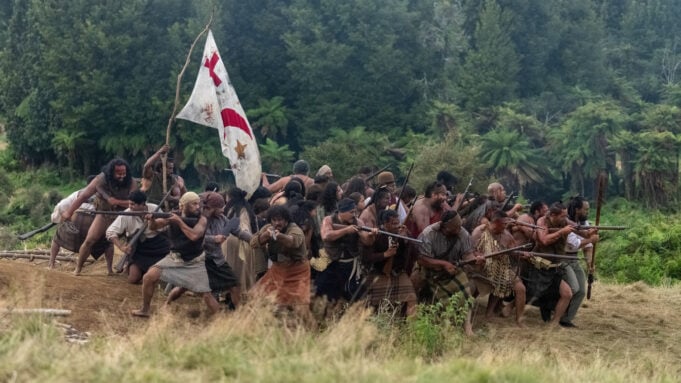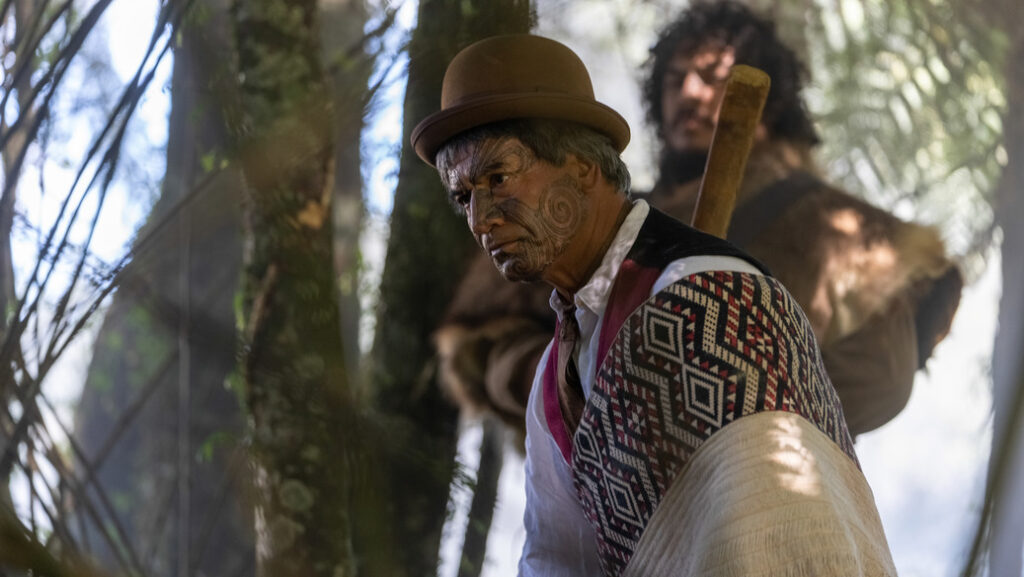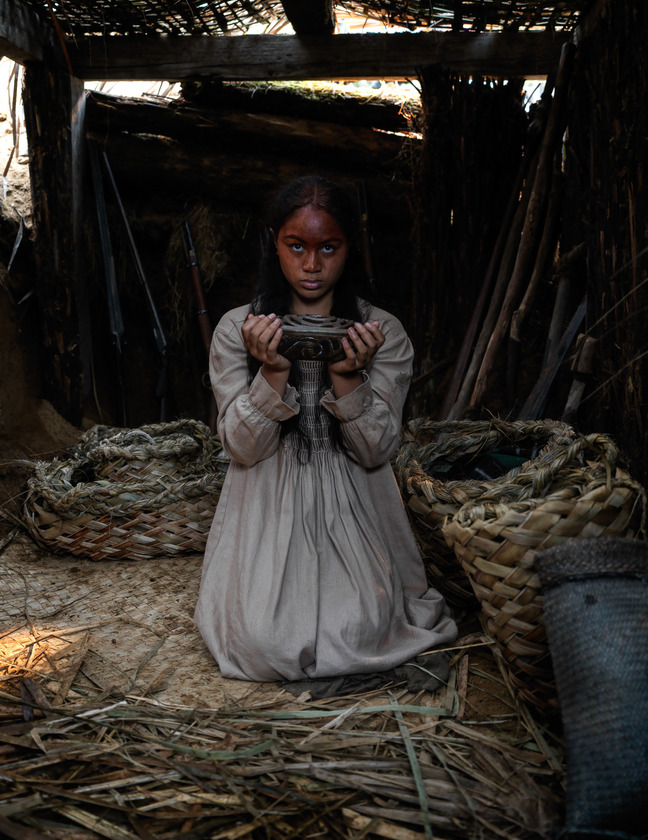Setting out with a brief from director Michael Jonathan to create an “unworldly” film score with “never before heard” elements, Tiki Taane and Arli Liberman went to work.
“Mike said, ‘That’s why I’ve come to you guys.’ I was like, ‘No pressure bro,'” Taane tells Rolling Stone AU/NZ. As two of Aotearoa’s most accomplished and admired composers, not only was their task to enhance the film, titled “Ka Whawhai Tonu – Struggle Without End,” but their work also needed to accurately capture the heart of the story.
The opening images show the untouched beauty of Aotearoa’s oldest forest, Te Urewera, while an ominous soundscape hints that Papatūānuku (Earth Mother) is unsettled.
It sets the mood for the new historical epic which digs deep into the invasion of Ōrākau – fought in Waikato – a battle between vastly outnumbered Māori attempting to stand their ground against the determined advancement of Colonial forces. Told through the lens of two teenagers, they’re forced to fight for their fate amid the conflict.
Jonathan had originally sent Taane the script about five years ago, and the musician was immediately drawn in.
“He said, ‘I want you to make music for this film, so get ready when the time comes.’ I read the script. I was like, ‘Awesome, this is cool.’ It made me get excited about it. And then I forgot about it,” Taane says.
But last year, the emotions flooded back when Taane got the call it was time for him to come on board. Playing around with ideas, he linked up with his good friend, award-winning composer and producer Liberman.
Israeli-born Liberman, who has lived in New Zealand since 2009, boasts an extensive list of incredible achievements, which include taking out the 2021 APRA Silver Scroll award for Best Original Music in a film for “Savage” and creating the score for the documentary “Stylebender” on UFC phenomenon Israel Adesanya.
He immediately felt honoured to be included, with a passion for any project in which Indigenous power is expressed and celebrated.
“For me, Indigenous culture and method and methodologies, essentially across all of them, it’s about worshipping the environment and worshipping the ecological system. Once it was all go, we realised we had to really tap into some proper sacred sonic DNA,” Liberman explains over a video call from his Titirangi studio.
It didn’t take them long to realise it wasn’t dramatic or intense arrangements that would bring the film to life, but a minimal score which reflected the traumatic impact on both the land and the people.
“Tiki and myself, we just decided to go into all the things that don’t happen on the screen – all the spiritual pollution that happened and the ecological trauma that this land has experienced and transcended into the people. Those are the things that we were targeting hard,” Liberman says.
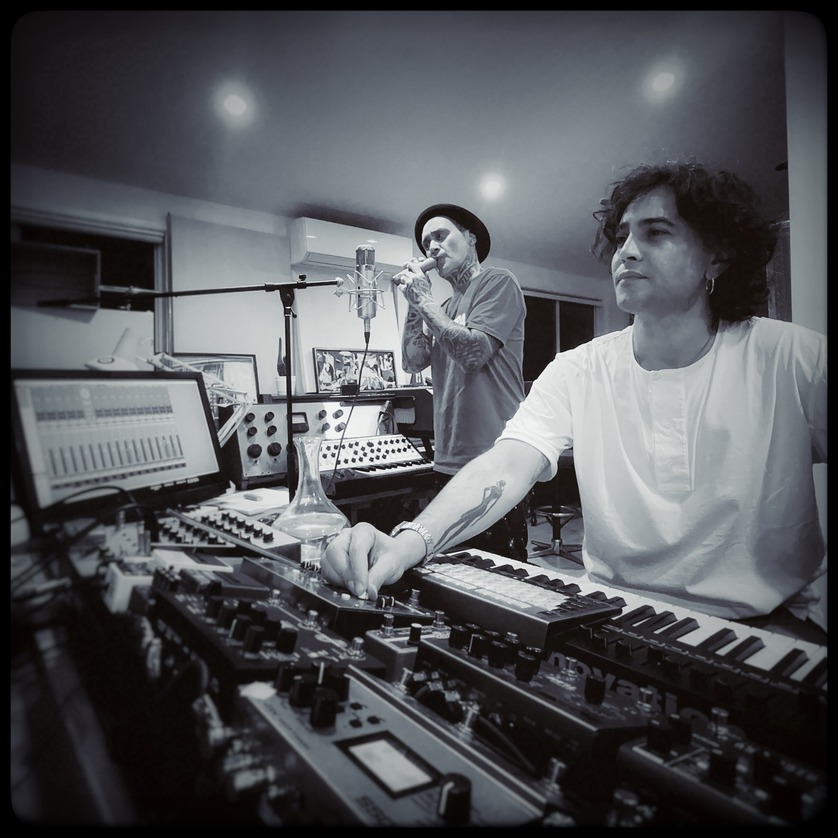
With the film in te reo Māori with English subtitles, they were conscious to give the language the space it needed to truly be received.
“Don’t worry about that, anybody,” Taane says with a chuckle. “It’s easy to follow; in fact, you’re so intrigued, it’s actually probably easier. You get into the film even more because you’re reading these subtitles and you’re really focusing.”
Liberman adds: “Te reo is one of my favourite languages in the world, it’s the most beautifully musical language. When I watched the cut for the first time, I was taken back by the level of reo. We didn’t want to get in the way of that. I said to everybody, ‘Why do we even want much score on that?'”
Wanting to shy away from the classic sounds an audience might expect in an action-packed film based around a massive battle, they came up with new ways of boosting the impact with their music.
“You don’t want to create music that will pop that bubble, so we did a lot of music that actually supports the film as an environmental sound,” Taane says.
“We were thinking, ‘What does Mother Earth sound like on the battlefield? What is her response to this?’ She’s hurting. ‘What does Taane Mahuta, the trees, sound like on the battlefield?’ Because he’s hurting.”
Utilising taonga pūhoro (Māori instruments), Taane and Liberman developed flowing emotional underscores with tones you’d only recognise the intensity of if you watched the film without them.
“I wanted to create a very transformative experience, a little bit like a dream. It’s a bit of a surreal score most of the time. When it’s more traditional, that’s when you’re noticing it, but it was writing itself. It was such a unique experience that I kept telling Tiki, ‘Dude, I’m so grateful to be here,’ and I felt like he was also feeling something special too,” Liberman says.
With a focus on gentle and natural sounds, the pair went to work to create music from tones of the Earth – the sound of wind blowing through leaves or a foot stomping on the ground.
“Co-existing with the reo, it was an immediate decision that the majority of the time we needed to have a thing that I like to call stealth score,” Liberman reveals. “I wanted to arrange the strings and whatever instrument you play on it, to make it sound like they are embedded into the environment.”
As they showed Jonathan their work, he was captivated. The director says they created “absolute genius” by incorporating boombastic pūtātara (trumpets) to help energise the intensity throughout the battle scenes, where they had accepted some traditional wartime themes for the arrangements.
“The days I came into Arli’s studio I was literally blown aware of what they were both coming up with,” Jonathan says. “Despite days without sleep, they were driven, almost like seekers of a new artistic high. Witnessing their pure creative process was an honour.”
At a viewing of the final draft, Jonathan realised the magic they had made needed to continue into the credits.
“At the end, Mike said, ‘We really need a song to pull us out of this film,'” Taane remembers.
“I envisioned a song that would leave the audience in awe, gradually building to a powerful anthem of collective hope and change,” Jonathan adds.
That song is “Hold on to the Dream”, an intensely commanding anthem that encourages self-reflection until the screen fades to black.
“For the audience to sit through that for two hours, we really need something uplifting and beautiful at the end that can bring us into a space of unity, love, and give a positive feeling,” Taane says.
“I showed Arli and we quickly recorded this thing. Then I sent off the vocals thinking we need to get [Aotearoa singer-songwriter] Louis Baker in here because I knew that he could sing it better than me.”
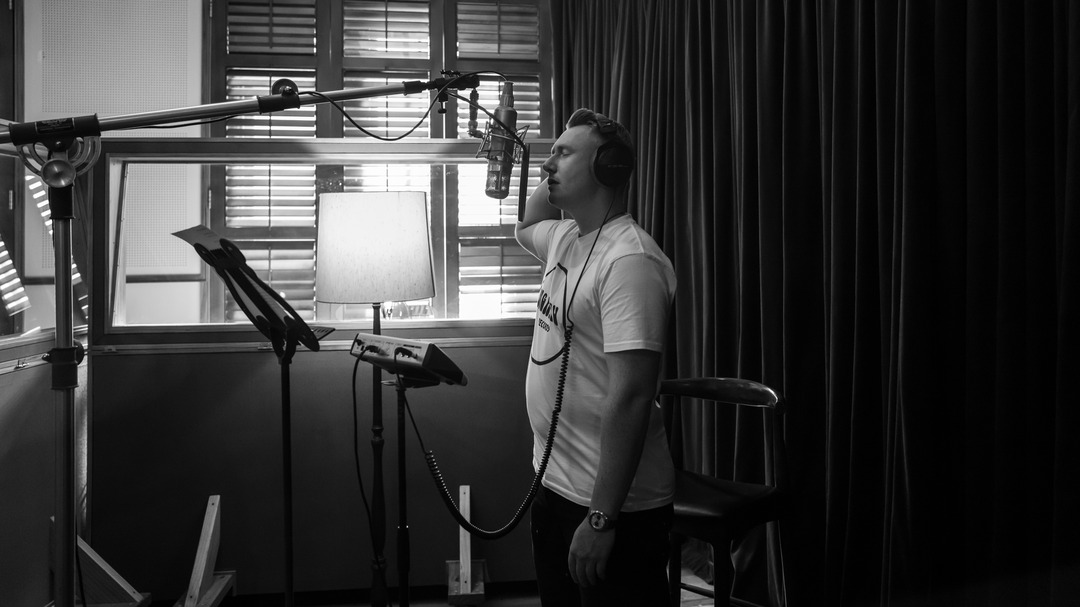
Baker recalls instantly falling in love with the song as soon as he heard it.
“I wanted to really understand the meaning behind it so the first thing I did was inform myself further about the battle of Ōrākau. This allowed me to dig deeper into the feeling and emotion that I wanted to convey in the vocal to serve the song and film, ” he shares.
“Along with Tiki, Mike and Arli‘s guidance, we recorded the vocals that we felt gave the film the most emotion to the story. It’s a huge honour to be a part of this kaupapa. I hope this film travels far and wide so that more Māori feature films and stories, told by Māori, can be made.”
The overall message, Baker says, is about staying true to your cultural values, being strong in the face of adversity, and holding onto hope.
One week later, they were at Roundhead Studios with screen players from the Auckland Philharmonia Orchestra.
Aided by the film’s illuminating imagery of Aotearoa’s beautiful scenic charms, the storytelling crucially sheds light on the brutal displacement of the country’s rightful land owners. And for many of the creatives involved in the film, the story was intensely personal.
“My descendants shed blood on that battlefield – and it’s the same for most of the cast, and the people working on the film,” Taane says.
“It’s never been told from a Māori perspective, using Māori directors, Māori actors, Māori producers, Māori sound – but also have the involvement and blessing from the iwi. We’re telling the story our way.”
That’s why Taane hopes people check the film out and acknowledge a massive part of New Zealand’s history.
“I want all my non-Māori friends not to be scared of the film – go and see it. It gives you so much more hope about where we’re heading as Māori, but also as a nation in Aotearoa, New Zealand, for non-Māori too in a way that we can come together to create such a great nation and culture.
“It happened, right or wrong, but we can move forward and move forward together. That is the whole idea of this film – to bring people together through that story.
“This is an important story to be able to share with everybody, feel the unity, and feel proud this film has been made the way it has been made. Don’t be scared, don’t be afraid, be empowered.”
“Ka Whawhai Tonu – Struggle Without End” is in New Zealand cinemas now.































